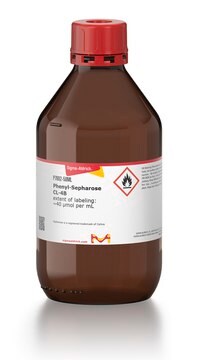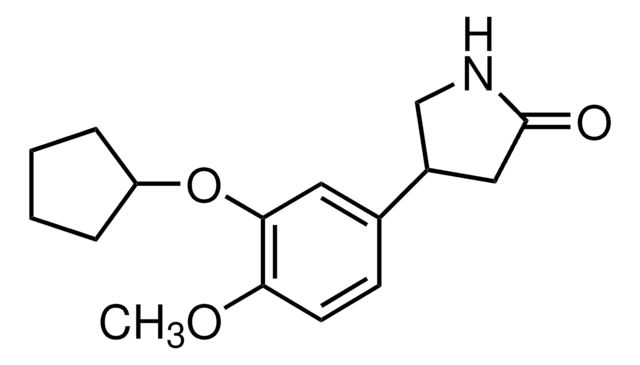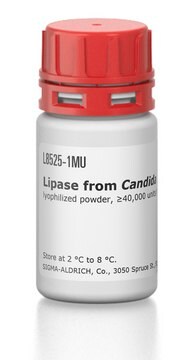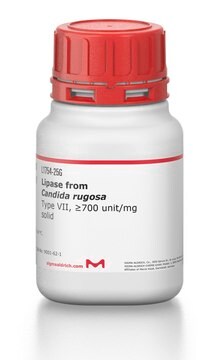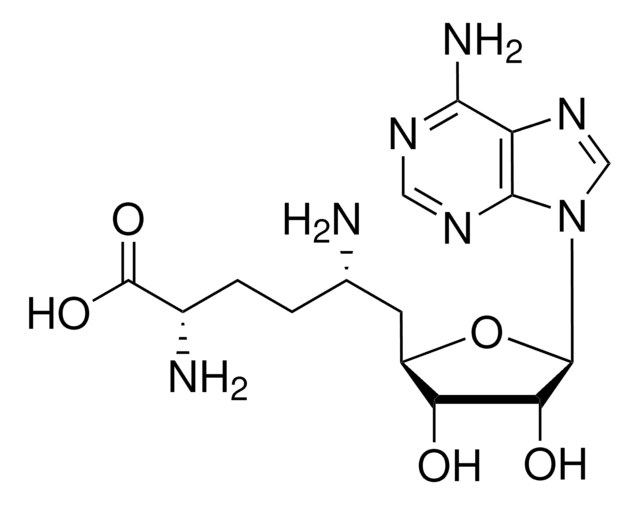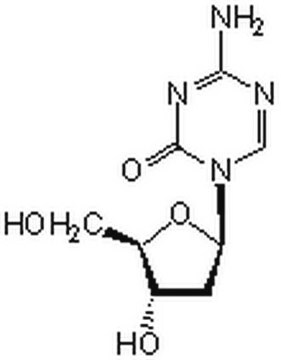R8279
RG108
≥98% (HPLC), powder
Sinonimo/i:
N-Phthalyl-L-tryptophan
About This Item
Prodotti consigliati
Livello qualitativo
Saggio
≥98% (HPLC)
Forma fisica
powder
Attività ottica
[α]/D -250 to -310°, c = 0.5 in methanol
Colore
yellow
Solubilità
DMSO: >10 mg/mL
Temperatura di conservazione
−20°C
Stringa SMILE
OC(=O)[C@H](Cc1c[nH]c2ccccc12)N3C(=O)C4=CCCC=C4C3=O
InChI
1S/C19H16N2O4/c22-17-13-6-1-2-7-14(13)18(23)21(17)16(19(24)25)9-11-10-20-15-8-4-3-5-12(11)15/h3-8,10,16,20H,1-2,9H2,(H,24,25)/t16-/m0/s1
LMAZUAXDZRILNJ-INIZCTEOSA-N
Descrizione generale
Applicazioni
- in reprogramming and increasing cell plasticity of primary multipotent mesenchymal stromal cells (MMSC)
- as an inhibitor of DNA methyltransferase (DNMTi) in human retinal pigment epithelial ARPE-19 cells
- as a DNA methyltransferase inhibitor in C33A2 cells to test its effect on papillomavirus late gene expression (HPV16)
Azioni biochim/fisiol
Caratteristiche e vantaggi
Codice della classe di stoccaggio
11 - Combustible Solids
Classe di pericolosità dell'acqua (WGK)
WGK 3
Punto d’infiammabilità (°F)
Not applicable
Punto d’infiammabilità (°C)
Not applicable
Certificati d'analisi (COA)
Cerca il Certificati d'analisi (COA) digitando il numero di lotto/batch corrispondente. I numeri di lotto o di batch sono stampati sull'etichetta dei prodotti dopo la parola ‘Lotto’ o ‘Batch’.
Possiedi già questo prodotto?
I documenti relativi ai prodotti acquistati recentemente sono disponibili nell’Archivio dei documenti.
I clienti hanno visto anche
Il team dei nostri ricercatori vanta grande esperienza in tutte le aree della ricerca quali Life Science, scienza dei materiali, sintesi chimica, cromatografia, discipline analitiche, ecc..
Contatta l'Assistenza Tecnica.